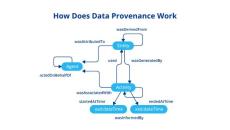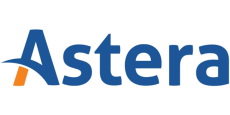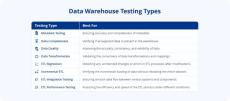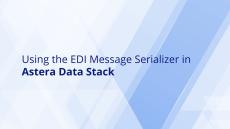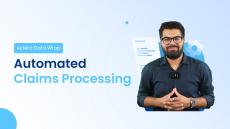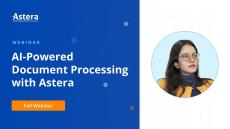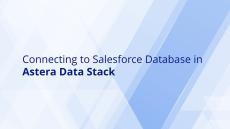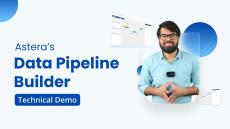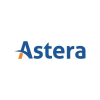|
By Zoha Shakoor
Data provenance is a method of creating a documented trail that accounts for data’s origin, creation, movement, and dissemination. It involves storing the ownership and process history of data objects to answer questions like, “When was data created?”, “Who created the data?” and “Why was it created? Data Provenance is vital in establishing data lineage, which is essential for validating, debugging, auditing, and evaluating data quality and determining data reliability.
|
By Saba Jahangir
Metadata refers to the information about data that gives it more context and relevance. It records essential aspects of the data (e.g., date, size, ownership, data type, or other data sources) to help users discover, identify, understand, organize, retrieve, and use it—transforming information into business-critical assets. Think of it as labels on a box that describe what’s inside. Metadata makes it easier to find and utilize the data that you need. Typical metadata elements include.
|
By Saba Jahangir
Before shedding light on metadata management, it is crucial to understand what metadata is. Metadata refers to the information about your data. This data includes elements representing its context, content, and characteristics. It helps you discover, access, use, store, and retrieve your data, having a wide spread of variations. Metadata of an image. Image by Astera. Let’s look at some of the metadata types below.
|
By Usman Hasan Khan
Data aggregation is the process of combining and summarizing data from disparate sources into a cohesive dataset. It prepares data for analysis, making it easier to obtain insights into patterns and insights that aren’t observable in isolated data points. Once aggregated, data is generally stored in a data warehouse. Then, you can leverage it to gain a holistic perspective on your operations and market trends, design effective risk management practices, and make more informed decisions overall.
|
By Mariam Anwar
A solid understanding of internal technical and business terms is essential to manage and use data. Business glossaries are pivotal in this aspect, facilitating improved understanding and collaboration among teams. A business glossary breaks down complex terms into easy-to-understand definitions, ensuring that everyone in the organization, from the newest recruit to the CEO, is on the same page regarding business language.
|
By Usman Hasan Khan
OLTP is a transaction-centric data processing that follows a three-tier architecture. Every day, businesses worldwide perform millions of financial transactions. This fact brings to mind client-facing personnel such as bank tellers and supermarket cashiers tapping away on keyboards and at cash registers, and with good reason. According to ACI Worldwide, a payment systems company, there was a 42.2% growth in global real-time transaction volumes in 2023, amounting to 266.2 billion transactions.
|
By Fasih Khan
Data mining, also known as Knowledge Discovery in Data (KDD), is a powerful technique that analyzes and unlocks hidden insights from vast amounts of information and datasets. Data mining goes beyond simple analysis—leveraging extensive data processing and complex mathematical algorithms to detect underlying trends or calculate the probability of future events.
|
By Fasih Khan
Data filtering plays an instrumental role in reducing computational time and enhancing the accuracy of AI models. Given the increasing need for organizations to manage large volumes of data, leveraging data filtering has become indispensable.
|
By Fasih Khan
The success of data warehouse solutions depends on how well organizations implement test cases to guarantee data integrity. As organizations evolve, data warehouse testing becomes crucial to adhere to industry best practices.
|
By Zoha Shakoor
According to Gartner, 80% of companies worldwide are expected to have efficient data management systems in place by 2025. This projection highlights the growing recognition of data governance tools as essential enablers for maintaining and enhancing the quality and security of organizational data within these data management systems. In this blog, we will talk about some of the best data governance tools and software to consider in 2024.
|
By Astera
Our COO, Jay Mishra, talks with ODSC East about the possibilities of Generative AI and unstructured data management.
|
By Astera
In this video, we will be learning about the File System Action Workflow Task in Astera Data Stack. The File System Action task performs actions on a file or a folder, as it is configured.
|
By Astera
In this video, we will see how an EDI Message Serializer object works in Astera Data Stack. The EDI Message Serializer object is used to build an EDI Message in the required EDI partner profile before it is written to a destination.
|
By Astera
Discover how Astera's AI-powered document processing solution simplifies claims handling. Learn how to automate data extraction, validation, and scheduling for faster, more efficient claims processing.
|
By Astera
In this video, we will learn how to effortlessly integrate Salesforce legacy databases into your data workflows using Astera Data Stack. This video provides a comprehensive walkthrough of configuring the Salesforce Database connector, ensuring smooth data extraction and loading processes.
|
By Astera
In this video, we will see how Run SQL Script workflow task works in Astera Data Stack. The Run SQL Script task provides flexibility to write an SQL code within Astera and execute it as part of a workflow.
|
By Astera
In this video, we will learn how to seamlessly integrate Salesforce databases into Astera Data Stack for efficient data extraction and loading. This video provides step-by-step guidance on configuring the Salesforce Database connector. Learn the process of establishing a successful connection and leveraging Salesforce data within your dataflows.
|
By Astera
Discover Astera’s Data Pipeline Builder, the no-code solution for easy data integration in today's businesses. With its user-friendly drag-and-drop interface, integrating, cleaning, and transforming data has never been simpler. Watch our demo to see how Astera can automate your end-to-end data management lifecycle, boosting your organization's efficiency. Start watching to accelerate your data integration tasks!
|
By Astera
Watch as we take you through the data preparation process for marketing data - step by step.
|
By Astera
In the insurance industry, the claims process plays a vital role in shaping an insurer's reputation, customer satisfaction, and financial performance. However, this process is primarily characterized by the substantial volumes of unstructured data that insurers must adeptly handle and leverage to enhance the customer journey and streamline claims lifecycle management.
|
By Astera
The big increase in data, more sources of data, and the need for quick insights mean companies have to move away from slow, fixed methods of handling data. Dynamic ETL emerges as a timely solution, offering the flexibility to process data in real time, adapt to changing formats seamlessly, and scale operations efficiently.
|
By Astera
The education sector has always worked with data to guide various processes, most notably student progress. But with powerful, AI-driven data extraction tools impacting other industries, it's time for educators to leverage these tools, accelerate data extraction, and turn data into actionable insights much faster.
|
By Astera
A Single Customer View (SCV) is crucial for optimizing marketing ROI from a tech standpoint as it consolidates data from diverse channels, offering a complete customer profile.
- May 2024 (14)
- April 2024 (14)
- March 2024 (26)
- February 2024 (10)
- January 2024 (4)
- December 2023 (6)
- November 2023 (1)
Astera Software is a rapidly-growing provider of enterprise-ready data management solutions. Our goal is to make data-driven insights more accessible than ever through no-code, user-friendly, and automated data extraction, data integration, data warehousing, API management, and EDI solutions.
Features of Astera Centerprise:
- Support for Diverse Systems: Connectivity to a range of structured, unstructured, and semi-structured data sources, including databases, web services, data warehouses, and flat file formats, such as delimited and CSV is the basic staple of all information mapping tools.
- Graphical, Drag-and-Drop, Code-Free User Interface: A code-free environment to create mappings and a graphical, drag-and-drop UI to process data using built-in transformations.
- Ability to Schedule and Automate Jobs: The ability to orchestrate a complete workflow using time and event-triggered job scheduling is a valuable feature in a tool. This automation cuts down the manual work, improving productivity and saving time.
- Instant Preview Feature for Real-Time Testing: Intuitive features like Instant Data Preview help prevent mapping errors at the design time. This functionality lets the user view the processed and raw data at any step of the data process.
- SmartMatch Data Conversion Mapping for Resolving Naming Conflicts: Synonym-driven file reading to resolve discrepancies in field names and business data lineage function to address the challenges of naming conflicts. It can be done by defining synonyms for a word in the synonym dictionary of a particular project.
Empowering Enterprises Across the Globe to Turn Data into Insights at Lightning-fast Speed!


